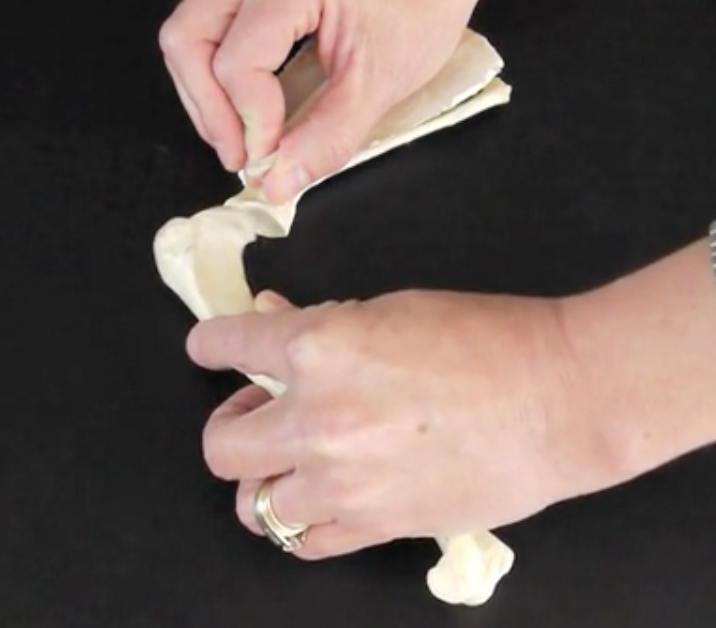Laurie's Blogs.
Feb 2019
Mobilize or Exercise… what to do with that OA joint?

Things happen for a reason! This week I was having a discussion with the intern that was with us about mobilization for OA joints. How much time do I spend mobilizing versus other therapies? To be honest, the answer might surprise you! And as fate would have it, I just came across a paper that I can use to back up my actions!
Okay, so firstly, the answer to the question above. If I have a patient come with an OA joint, I will mobilize just a little bit, but it depends on the joint. OA elbows… no amount of mobilization will make them happy. OA tarsal joints… they just seem to get GLUED together. OA shoulders, carpi, digits, hips and stifles… those joints do seem to respond a bit better to mobilizations, so I’ll do a little bit for them. (Now, I’m not going into spinal joints… I love mobs for spinal joints.) Do I do therapeutic exercise with these extremity OA dogs? No! Not in clinic. Not more than teaching owners some exercises to do at home and advising them on monitoring their dogs for walking ability / distance / time. The way I look at it. An owner CAN’T do the mobilizations, and the owner doesn’t have access to the modalities I have or the other skills (acupuncture, myofascial release, etc.). So, I spend my clinic time doing a little bit of mobilizing, add in modalities or acupuncture, or other soft tissue techniques, and I discuss home exercise. Exercise IN clinic, if the owner would like, can consist of the underwater treadmill or pool swimming, but again, remember, I have already discussed exercises to help strengthen the muscles around the problematic joint for the owner to do at home (if practical).
So… what was in the research paper I found?
Anwer S et al. Effects of orthopaedic manual therapy in knee osteoarthritis: a systematic review and meta-analysis. Physiotherapy 2018 , Volume 104 , Issue 3 , 264 – 276
Objective: This systematic review to aimed to evaluate the effects of orthopaedic manual therapy (OMT) on pain, improving function, and physical performance in patients with knee osteoarthritis (OA).
Results: Eleven randomized controlled trials were included (494 subjects). The results of the meta-analysis indicated that reduction of visual analogue scale (VAS) score in OMT compared with the control group was statistically insignificant. The reduction of VAS score in OMT compared with exercise therapy group was statistically significant. The reduction of WOMAC pain score (a function-based pain scoring system) in OMT compared with the exercise therapy group was statistically significant. The reduction of stairs ascending-descending time in OMT compared with the exercise therapy group was statistically significant.
Conclusions: This review indicated OMT compared with exercise therapy alone provides short-term benefits in reducing pain, improving function, and physical performance in patients with knee OA.
Okay, so what does this mean?
1. Manual therapy was better than exercise alone for pain, function, and physical performance (short term).
2.Do more than just exercise for your OA patients!
3.Perhaps add manual therapy BEFORE you exercise your OA patients to get even better results in pain, function and physical performance.
Is this the whole picture?
No! As a physical therapist, I rarely just choose one intervention. I always look to incorporate a plan that has MANY facets! As well, and I know this will be controversial (for the human therapists anyways), MODALITIES are not evil when used appropriately! And I think that osteoarthritis is one of those conditions in which they have a place to shine! The human healthcare field is currently ‘down on modalities’… mostly because we are trying to get away from ‘passive’ therapies where patients don’t take responsibility for their own health and healing. Also, because chronic pain science research is telling us that the problem is with the ‘wiring’ and ‘interpretation centres’ (i.e. spinal cord and brain), not an actual problem in the periphery… so we need to treat via non-passive mechanisms.
That’s all well and fine, if you can take your human chronic pain patient through visualization training, perhaps mirror therapies, psychological counseling and reassurances, and begin them with ‘safe’ ‘non-flaring’ exercises to change neural pathways. I get it! But in the dog, I might need to incorporate some passive therapies with active therapies in order to accomplish exactly the same thing. (Until they perfect dog-human-speech-translator devices!)
So, there you have it! My take on osteoarthritis and manual therapies, my interpretation of this research, how I actually treat, and food for thought for future research!
On that note, do great things this week, make a difference, and love what you do!
Cheers! Laurie


